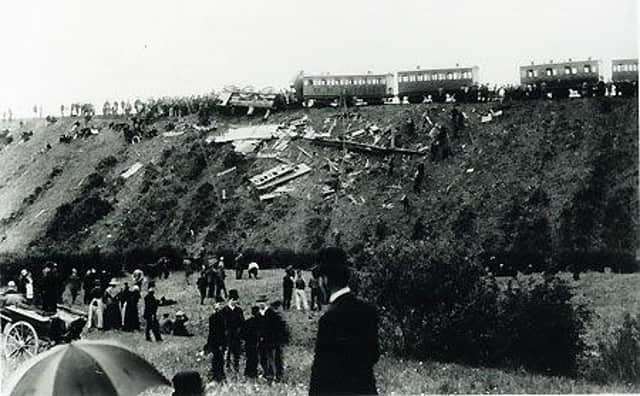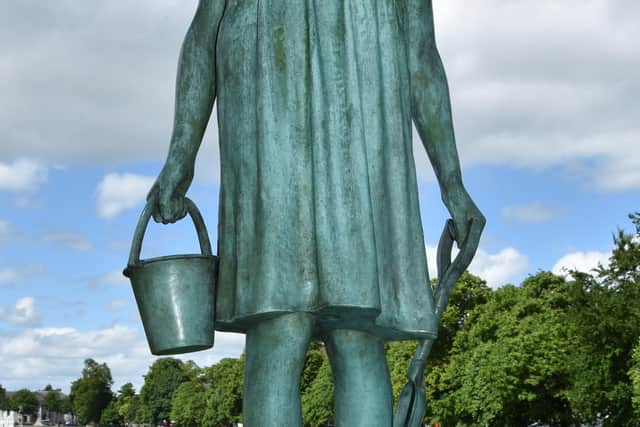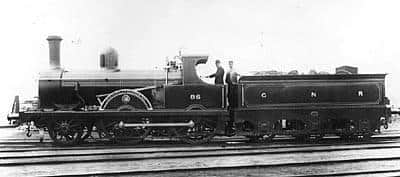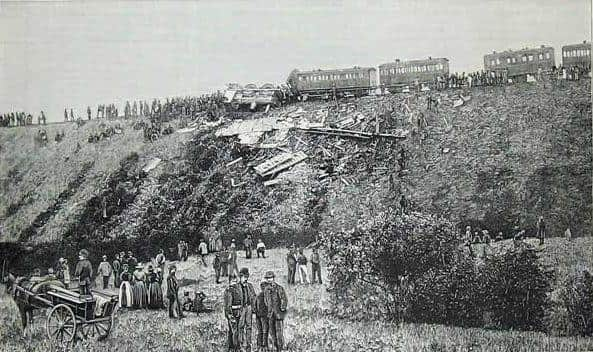A girl in bronze with a bucket and spade commemorates a train crash


Sadly, the lockdown disrupted my plans. Sculpted by Mayo-based Rory Breslin and set on a limestone plinth, the piece depicts youthful joy and expectation cruelly extinguished by tragedy and sadness - the Armagh Rail Disaster of 1889 - when a local Sunday-school excursion-train stalled while attempting to negotiate a steep incline.
When the 12 th of June dawned 131 years ago in 1889, hundreds of church folk walked behind the band of the Royal Irish Fusiliers to Armagh’s railway station.
Advertisement
Hide AdAdvertisement
Hide AdIt was a festive morning - the start of the annual Sunday School excursion!


But by the afternoon almost 90 had died, including many young
people - 19 were under 15 years old and 27 were between 15 and 20 years old - “the most appalling catastrophe of the kind which has ever taken place in the north of Ireland” said the News Letter.
The yearly Methodist Church Sunday school outing to Warrenpoint was attended by Presbyterian, Roman Catholic and Church of Ireland as well as Methodist families - the News Letter reported over a thousand ‘excursionists’ (there were around 1,200) setting off from the station.
Advertisement
Hide AdAdvertisement
Hide AdApproximately three miles out of Armagh steam engine number 86 and its carriages reached a steep gradient where, due to the number of passengers on board, the engine stalled.


Railwaymen divided the train, to take the first four carriages over the hill and on to another station.
Then the steam engine would come back and take the remaining eight carriages to re-join the train and continue onwards to Warrenpoint.
Stones were put under the wheels of the eight packed carriages on the incline to hold them there till the engine returned.
Advertisement
Hide AdAdvertisement
Hide AdBut the stones crushed under the weight and the carriages started moving downhill - back towards Armagh.


Horrifically, a speeding passenger train slammed into the runaway Sunday school carriages.
All religious denominations suffered horrific fatalities.
From the Church of Ireland 34 perished; 19 died from the Presbyterian Church, 18 from the Methodist Church and nine from the Roman Catholic chapel.
A number of day-trippers from other churches and organisations also died in the carnage,
Advertisement
Hide AdAdvertisement
Hide AdAmongst the dead was the son of the Rev William R McMullan, Minister of Abbey Street Methodist Church. The dead boy’s father was at the annual Methodist Conference in Cork.
When he returned to Armagh, as well seeing his own son lying in a coffin in the manse, Rev McMullan was told that his Sunday School Superintendent, Samuel Steel, was dead and every single member of the Abbey Street Church choir was either dead or injured.
The News Letter reported that the tragedy “plunged a city into profound mourning,” adding that in some parts of Armagh “there was not a house in which there was not one dead’.
Public buildings were used as temporary morgues and surgeries. The News Letter reported bodies being carried through the streets as if “some form of deadly pestilence has been raging unchecked and has converted a prosperous city into a charnel house. As the ghastly burdens were borne along the road during the afternoon and evening the gloom that was overhanging the city became greater.”
Advertisement
Hide AdAdvertisement
Hide AdThe next day the bells of Armagh’s churches took turns to toll out the tragedy.
Shops and businesses closed.
The streets were deserted.
The horrendous extent of the tragedy overwhelmed the community.
Then came the long succession of funerals, ending with over 35 victims buried on the Saturday.
The on-going scenes in the graveyards were described as heart-breaking by the News Letter “especially when one hears the groans and sobs of not only women and children, but of strong men who have come to lay their nearest and dearest in their last resting place”.
Advertisement
Hide AdAdvertisement
Hide AdOne of the Methodist Sunday School organisers who’d been travelling on the train, said “many a bitter battlefield did not display such carnage.”
One witness, recounting his efforts to help pull bodies from the wreckage, said that he saw a dead child with brothers and sisters standing nearby.
The same witness saw “bodies mangled and unrecognisable, and people walking around in a dazed state. This was the scene of utter devastation and will remain as a scar on the history of the city,” the witness added.
One of the injured survivors was a little girl called Nell, whose leg was crushed so severely it had to be amputated.
Advertisement
Hide AdAdvertisement
Hide AdBoth of Nell’s parents died in the accident but she hadn’t yet been told.
Her cries of pain in hospital were only interrupted by mournful pleading - “everybody’s papa and mamma are coming here but mine.”
As well as almost 90 who died, officially there were 170 injured, but unofficially this total was probably much higher, some say up to 400.
The accident remains the worst ever rail disaster in Ireland and resulted in the Regulation of Railways Act 1889, which is accepted as the beginning of the modern era in UK rail safety.
A message from the Editor:
Advertisement
Hide AdAdvertisement
Hide AdThank you for reading this story on our website. While I have your attention, I also have an important request to make of you.
In order for us to continue to provide high quality and trusted local news on this free-to-read site, I am asking you to also please purchase a copy of our newspaper whenever you are able to do so.
Our journalists are highly trained and our content is independently regulated by IPSO to some of the most rigorous standards in the world. But being your eyes and ears comes at a price. So we need your support more than ever to buy our newspapers during this crisis.
With the coronavirus lockdown having a major impact on many of our local valued advertisers - and consequently the advertising that we receive - we are more reliant than ever on you helping us to provide you with news and information by buying a copy of our newspaper when you can safely.
Advertisement
Hide AdAdvertisement
Hide AdYou can also enjoy unlimited access to the best news from across Northern Ireland and the UK by subscribing to newsletter.co.uk
With a digital subscription, you can read more than five articles, see fewer ads, enjoy faster load times, and get access to exclusive newsletters and content. Visit https://www.newsletter.co.uk/subscriptions now to sign up.
Thank you